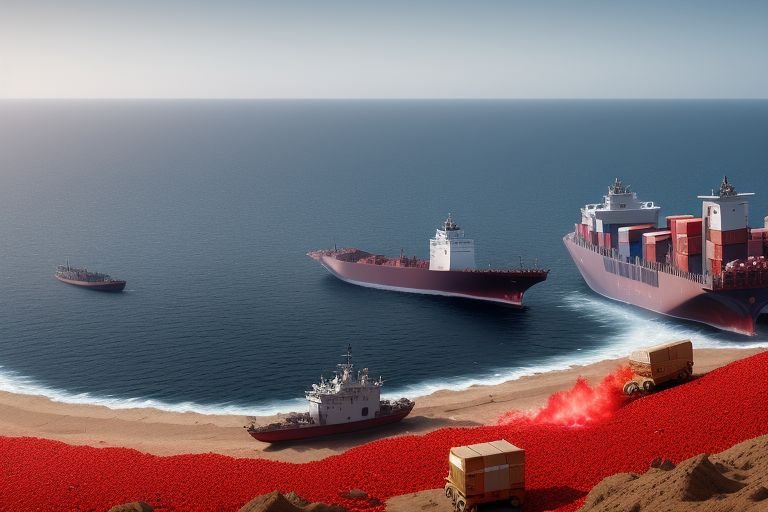
Global Supply Chains Face New Disruptions as Red Sea Tensions Escalate
Global supply chains are strained yet again due to the ongoing tensions in the Red Sea region that has compelled the shipping companies to alter the routes of their vessels and thus leading to delayed shipments all across the globe. It has however, deteriorated in the recent past due to Houthi rebels in Yemen increasing their attacks on commercial ships particularly through the Suez Canal.
Maersk, the world’s biggest container shipping firm, said on Wednesday that it will be avoiding the Suez Canal for the time being and will instead be routing all its vessels around the Cape of Good Hope. This decision will delay the travel time between Asia and Europe by 10-14 days and will increase the costs and can cause shortages of goods in the market.
It has begun to affect several industries; retailers have expressed their concerns over stock deficits, while manufacturers have reported delays in the delivery of components. This is because the automotive industry is characterized by just in time production systems and thus prone to such disruptions. Some of the world’s biggest car makers such as Toyota and Volkswagen have said that they may have to cut production at some of their factories if the situation continues.
Oil prices have also gone up with Brent crude oil price standing at $88 per barrel, the highest it has been in the past few months. The increase can be attributed to the emerging fears of supply chain risks and the extra costs that are associated with longer transit times. Energy specialists have stated that prolonged conflicts in the region may lead to the further increase in oil prices that, in turn, may affect the global economic development.
The shipping crisis is also affecting port operations across the globe in one way or the other. Already congested European ports are preparing for a further increase in traffic as the ships diverts around the African continent start to converge. The port of Rotterdam, the largest in Europe, has said that it will be increasing working hours and staff to cope with the increased traffic.
Due to the crisis, governments and international organizations are trying to look for the solution to the problem. The United States has suggested the idea of creating a multinational task force of naval forces to patrol the Red Sea with an aim of protecting the shipping routes but some countries are reluctant to join fearing that it may worsen the situation in the region.
The United Nations has said that it will convene an emergency session of the Security Council to discuss the issue and has urged the international community to seek a peaceful solution to the crisis that could threaten the freedom of navigation. But with the conflict in Yemen still ongoing there is no telling when the two sides will come to an agreement.
The shipping crisis is also contributing to the discussions about the fragility of the global supply chains and the requirement of their diversification. Some firms are now reviewing their logistics plans with some contemplating nearshoring or even building up inventory to counter future disruptions.
The technology industry is not an exception, and firms like Apple and Samsung have been affected by the supply chain disruption risks that may lead to delayed product releases because of the lack of components. This has therefore created a lot of interest in other means of transport such as air transport even though it is costly.
However, there are concerns from the economic experts that inflation may be a probable consequence of higher shipping costs and supply constraints. The situation is being watched by the world’s central banks because it may pose a challenge to their ability to control inflation and support economic growth.
The crisis is a clear indication of the globalization of the world economy as well as the effects of a conflict in a certain region. While companies and governments work to address the current problems, there is a rising understanding of the necessity to find long-term solutions for the further strengthening of the global supply chain systems in the world of rising uncertainty.


